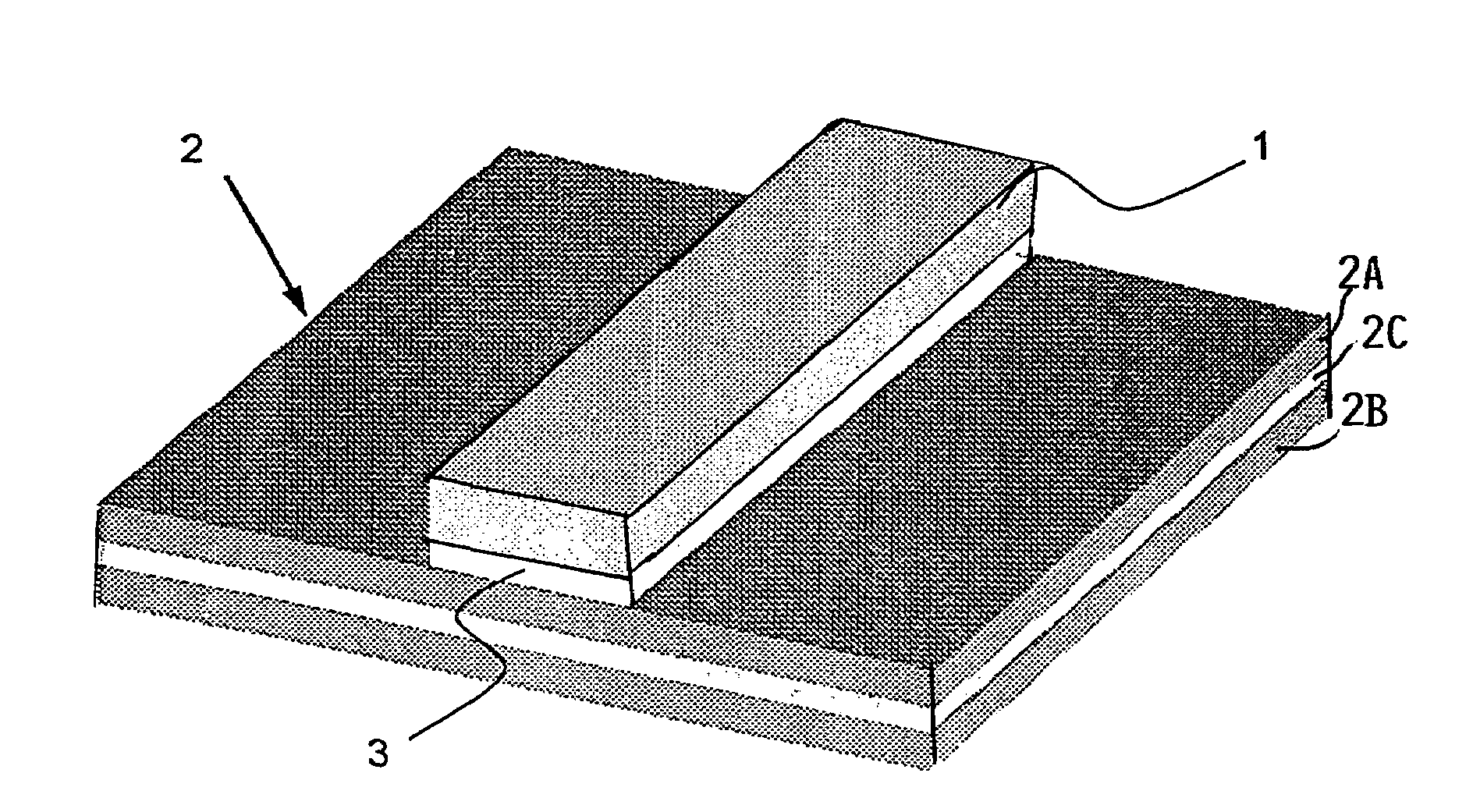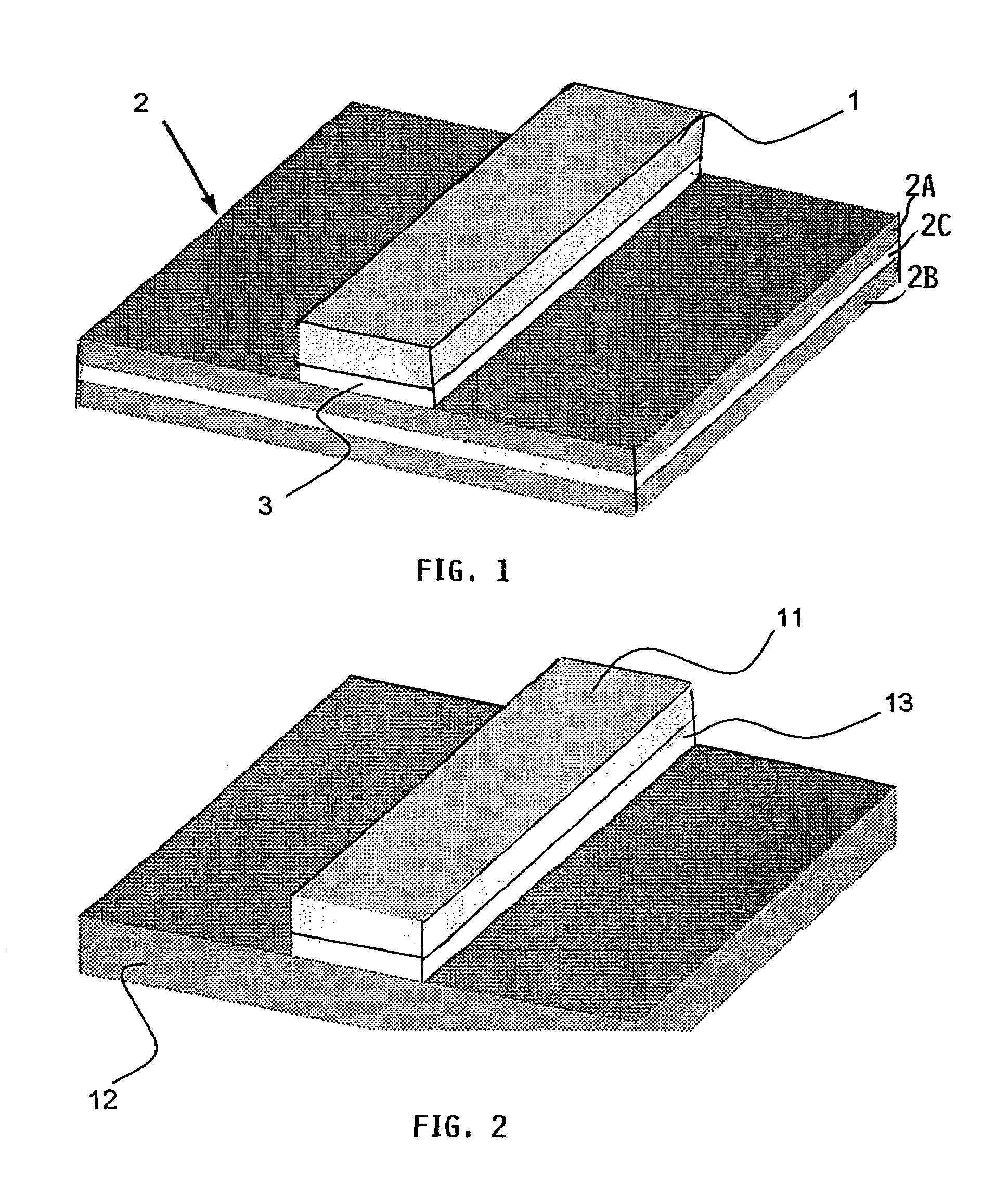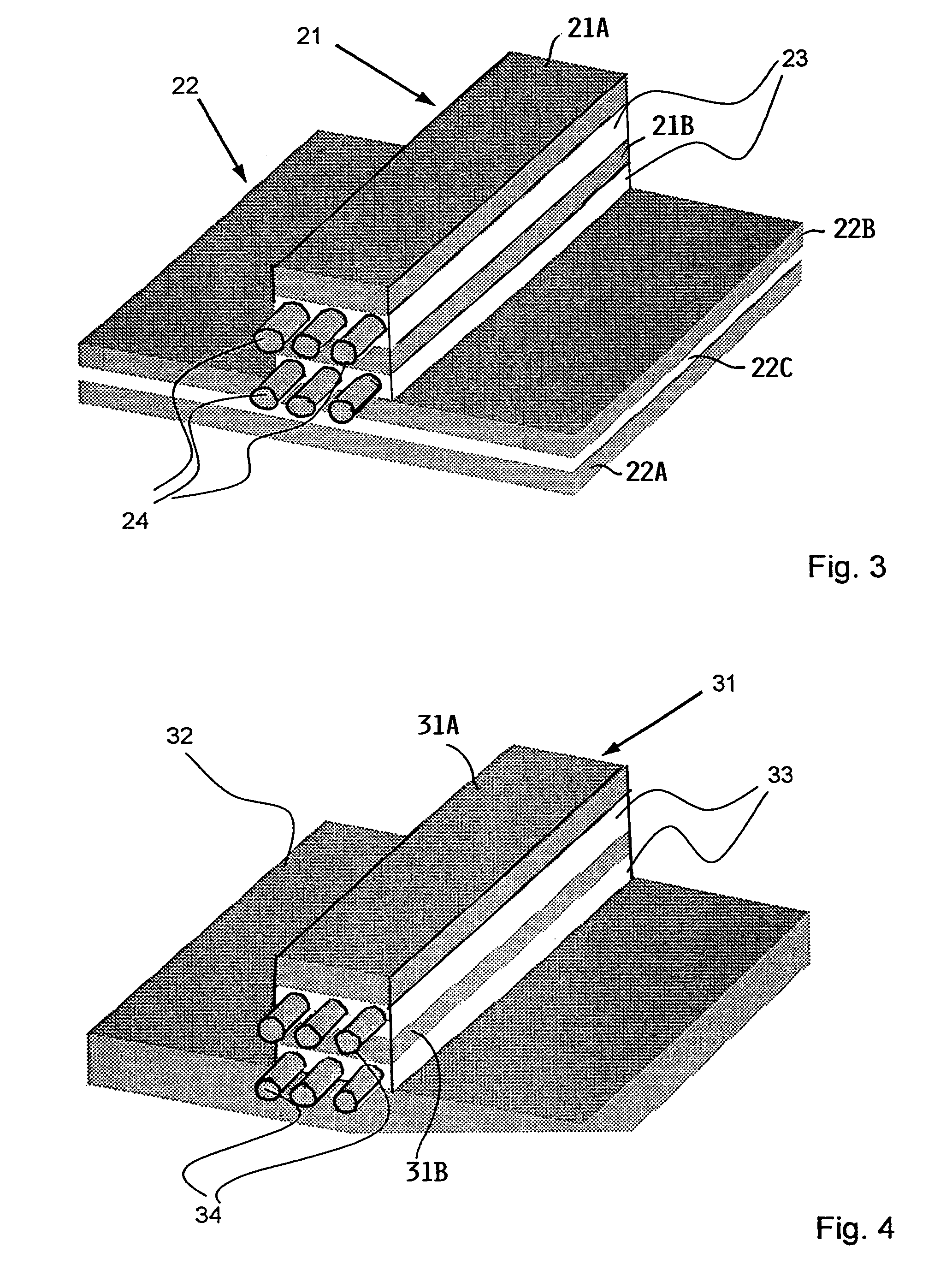Lightweight structure particularly for an aircraft
a technology for aircraft and light weight, applied in the field of light weight structure, can solve the problems of monolithic sheet metals, high production cost, and poor static strength characteristics of conventional fiber composite materials, and achieve the effects of improving damage tolerance, preventing crack propagation or crack formation, and slowing down crack propagation
- Summary
- Abstract
- Description
- Claims
- Application Information
AI Technical Summary
Benefits of technology
Problems solved by technology
Method used
Image
Examples
Embodiment Construction
[0022]Referring first to FIG. 6 for an overview of the invention when it is used in an aircraft body, longitudinally extending stringers S1, S2 form with circumferentially extending ribs an aircraft body frame or framework FW. An outer skin OS covers the framework FW outwardly. In a preferred embodiment according to the invention a lattice work LW is adhesively bonded to the inwardly facing side of the outer skin between the ribs R1, R2 and the stringers S1, S2. As shown the lattice work LW of the preferred embodiment comprises rows R and columns C of reinforcing strips adhesively bonded to the inner surface of the outer skin OS and to each other. While the lattice work of reinforcing strips is preferred, the reinforcing strips may be arranged only as columns or only as rows. In any such embodiments the angular orientation of the columns C and / or rows R relative to the stringers and relative to the ribs will be such that the reinforcing strips cross propagation directions of cracks ...
PUM
| Property | Measurement | Unit |
|---|---|---|
| length | aaaaa | aaaaa |
| thickness | aaaaa | aaaaa |
| width | aaaaa | aaaaa |
Abstract
Description
Claims
Application Information
 Login to View More
Login to View More - R&D
- Intellectual Property
- Life Sciences
- Materials
- Tech Scout
- Unparalleled Data Quality
- Higher Quality Content
- 60% Fewer Hallucinations
Browse by: Latest US Patents, China's latest patents, Technical Efficacy Thesaurus, Application Domain, Technology Topic, Popular Technical Reports.
© 2025 PatSnap. All rights reserved.Legal|Privacy policy|Modern Slavery Act Transparency Statement|Sitemap|About US| Contact US: help@patsnap.com



